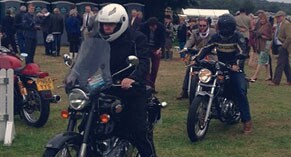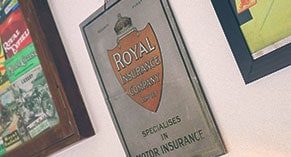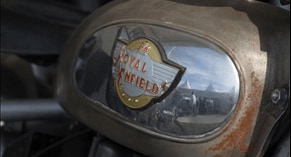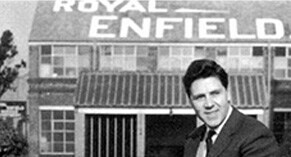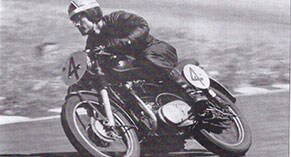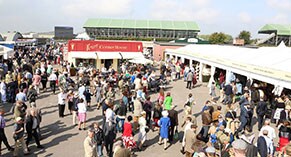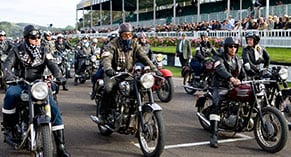Steve Linsdell of Flitwick in Bedfordshire, born in 1955, is a living legend. He's a racer of the old school, combining highly talented race riding skills with superb engineering ability. And his motorcycle of choice is a Royal Enfield.
Steve started motorcycling in the early 1970s and had a 700cc Royal Enfield Constellation as his first large road bike. When, in 1976, he decided to build himself a racer and compete in classic race events, a Royal Enfield was, for him, a natural choice. His 1950 350cc Bullet, bought for £10 as a box of parts, raised a few eyebrows when he registered it for VMCC racing in 1977. But Steve had the last laugh. He came second in his first ever race – and then won every single race bar one (a magneto problem that tailed him off to 4th position on his second Royal Enfield race bike, a 700cc Meteor)) for the next three years, despite competing against pukka 500cc factory-built racing machines.
Steve says that the key to his success is preparation. "I love bringing out the best of a design. When I started working on the 350 Bullet I was amazed at how well engineered it was." He took that basic, sound design and built on it. "There was nothing modern hidden in the engine. I maximised every single component to extract the very best from it. I ground my own cams and created an effective belt drive. I also made the bike as light and compact as possible."
His next major challenge was to build a Royal Enfield capable of lapping the hallowed Isle of Man TT circuit at an average speed of 100mph, a feat never achieved on a British pushrod single. This task took him years and a great deal of determination to accomplish.
In 1981 he built a 1959 Royal Enfield 500cc Big Head Bullet engine, housed in a Seeley racing chassis, and set off to the Isle of Man. With a top speed of 135 mph, Steve hit an average lap time of 94.67mph. But then business, family life and factory-based racing commitments on modern machines, in which he achieved 14 Isle of Man podium finishes, meant that his 100mph Enfield challenge had to take the back seat for a while.
In 2009 he returned to the island with a new 500cc Bullet, one that produced more than 50bhp at the rear wheel. His first lap was timed at 99.64mph, but a crankpin failure ended his dreams on the second lap. The following year he hit the magic 'ton' in practice, but a family tragedy prevented him from racing: Steve's son, Ollie, who also races, suffered a near fatal crash. Ollie recovered and in 2011, at last, Steve Linsdell and his Bullet achieved the success he sought - his first lap was timed at 102 mph. Successive laps of 102.5, 102 and 101.5mph put Steve fair and square in the record books. He'd ridden 151 miles at an average speed of 102 mph. Steve Linsdell's Royal Enfield is the fastest British pushrod single ever to lap the Isle of Man.
Steve returns to the Isle of Man every year but spends most of his time now supporting Ollie, who still races the Bullet along with many other bikes. In fact, in 2011, Ollie won the Ulster Grand Prix Classic race on the Royal Enfield.
Clearly, those superb riding skills have been passed down from father to son.
Throughout history, there have been several instances of motorcyclists who pledged themselves to turning the production Royal Enfields into successful racing machines. Royal Enfield historian, Gordon May, recounts the tales of legendary racing legends who often left the competition trailing behind.






